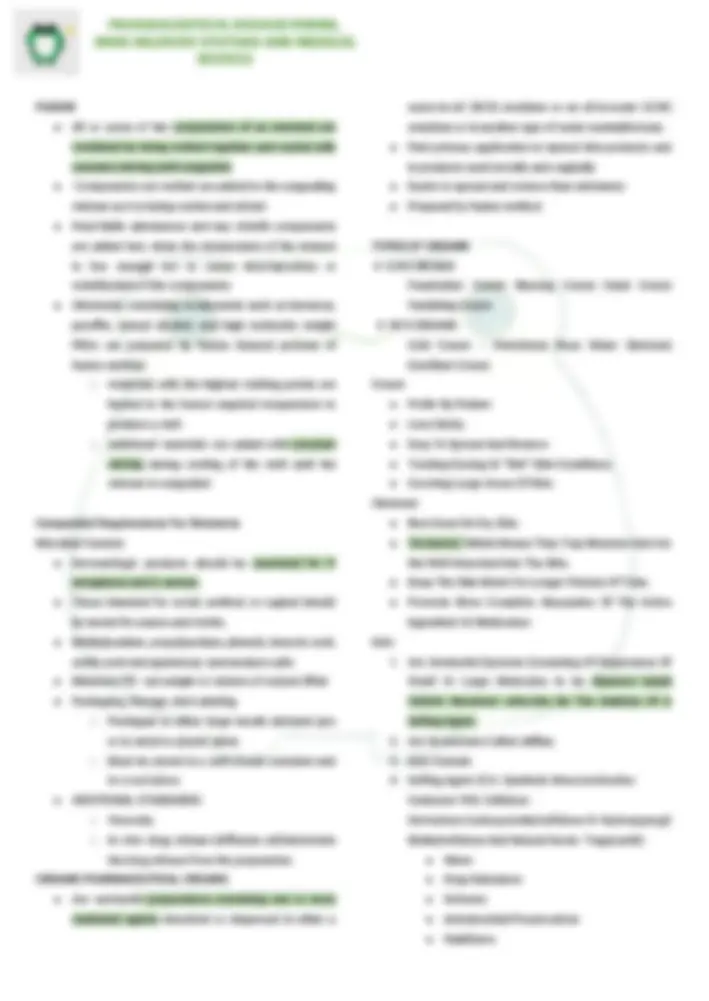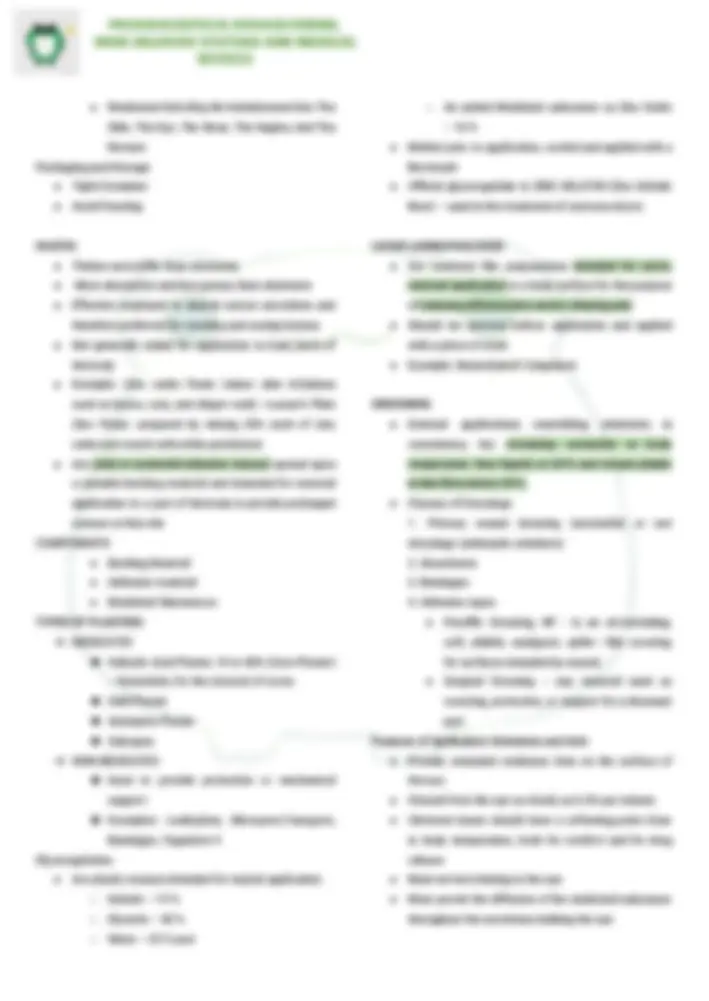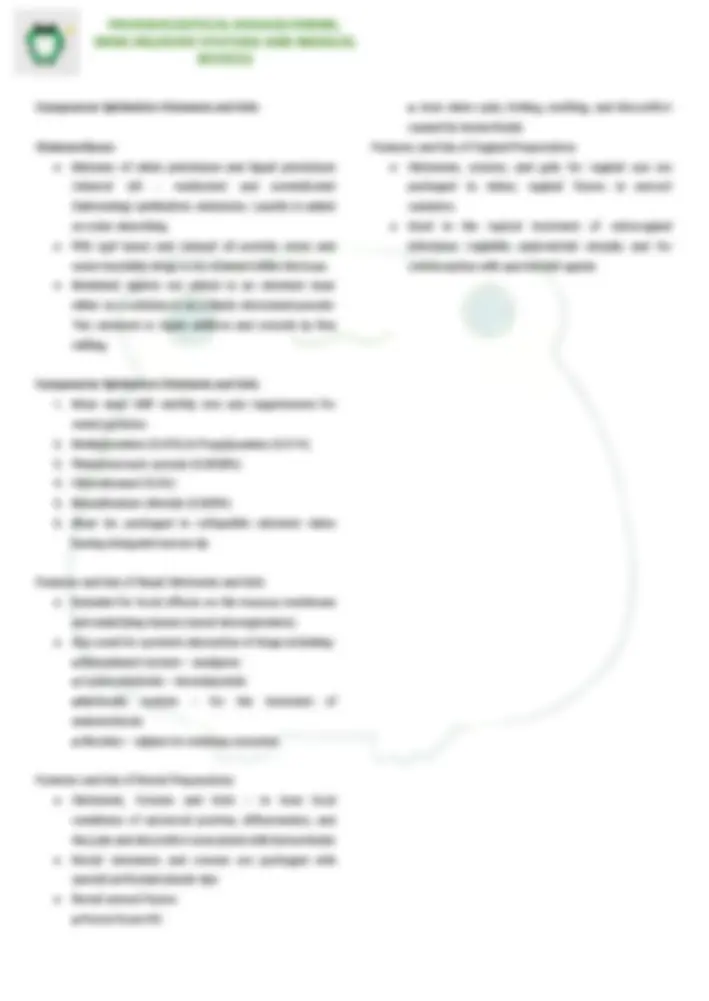





Study with the several resources on Docsity

Earn points by helping other students or get them with a premium plan


Prepare for your exams
Study with the several resources on Docsity

Earn points to download
Earn points by helping other students or get them with a premium plan
Community
Ask the community for help and clear up your study doubts
Discover the best universities in your country according to Docsity users
Free resources
Download our free guides on studying techniques, anxiety management strategies, and thesis advice from Docsity tutors
Semi-solids are medicinal dose forms that are both solid and liquid in consistency. They are distinct formulations that are adaptable and provide multiple advantages for drug delivery. Each type of semi-solid has its own distinct qualities and uses, making them appropriate for a variety of administration routes and therapeutic reasons. They have benefits such as ease of administration, enhanced drug retention, and precisely controlled release, resulting in useful pharmaceutical formulations.
Typology: Study notes
1 / 5

This page cannot be seen from the preview
Don't miss anything!




Semi solid dosage forms are the products when applied to the skin treat pathological condition and protect from other harmful environments. They are smooth, non-staining and get miscible with skin secretions. Components ● One Or More Active Ingredients ● Suitable Base ● Emulsifiers ● Viscosity Agents ● Antimicrobial Agents ● Anti-Oxidants ● Stabilizing Agents Uses of Semi-solid Preparation
Four General Groups Of Ointment Bases Hydrocarbon Bases Or Oleaginous Base ● Water free and contain petrolatum and/or modified petroleum waxes or paraffin oil ● Retained on the skin for prolonged periods ● Do not permit the escape of moisture from the skin ● Difficult to wash-off (greasy) ● Used for emollient and occlusive action Examples of Hydrocarbon Bases I. Petrolatum USP – Yellow Petrolatum, Petroleum Jelly, Vaseline® II. White Petrolatum – White Petroleum Jelly, White Vaseline® III. Yellow Ointment – Simple Ointment (contains 5% yellow wax) IV. White Ointment V. Mineral Oil – Liquid Petrolatum Absorption Bases ● Are not easily removed from the skin with water washing ● Useful as pharmaceutical adjuncts to incorporate small volumes of aqueous solutions into hydrocarbon bases Two Types of Absorption Bases
● Medicated Gels May Be Administered Into The Skin, The Eye, The Nose, The Vagina, And The Rectum Packaging and Storage ● Tight Container ● Avoid freezing PASTES ● Thicker and stiffer than ointments ● More absorptive and less greasy than ointments ● Effective employed to absorb serous secretions and therefore preferred for crusting and oozing lesions ● Not generally suited for application to hairy parts of the body ● Example: Zinc oxide Paste (minor skin irritations such as burns, cuts, and diaper rash) –Lassar’s Plain Zinc Paste- prepared by mixing 25% each of zinc oxide and starch with white petrolatum ● Are solid or semisolid adhesive masses spread upon a suitable backing material and intended for external application to a part of the body to provide prolonged contact at that site COMPONENTS ● Backing Material ● Adhesive material ● Medicinal Substances TYPES OF PLASTERS ➔ MEDICATED ◆ Salicylic Acid Plaster, 10 to 40% (Corn Plaster)
Components Ophthalmic Ointments and Gels Ointment Bases ● Mixtures of white petrolatum and liquid petrolatum (mineral oil) - medicated and unmedicated (lubricating) ophthalmic ointments. Lanolin is added as water absorbing. ● PEG (gel base) and mineral oil permits water and water-insoluble drugs to be retained within the base. ● Medicinal agents are added to an ointment base either as a solution or as a finely micronized powder. The ointment is made uniform and smooth by fine milling. Components Ophthalmic Ointments and Gels